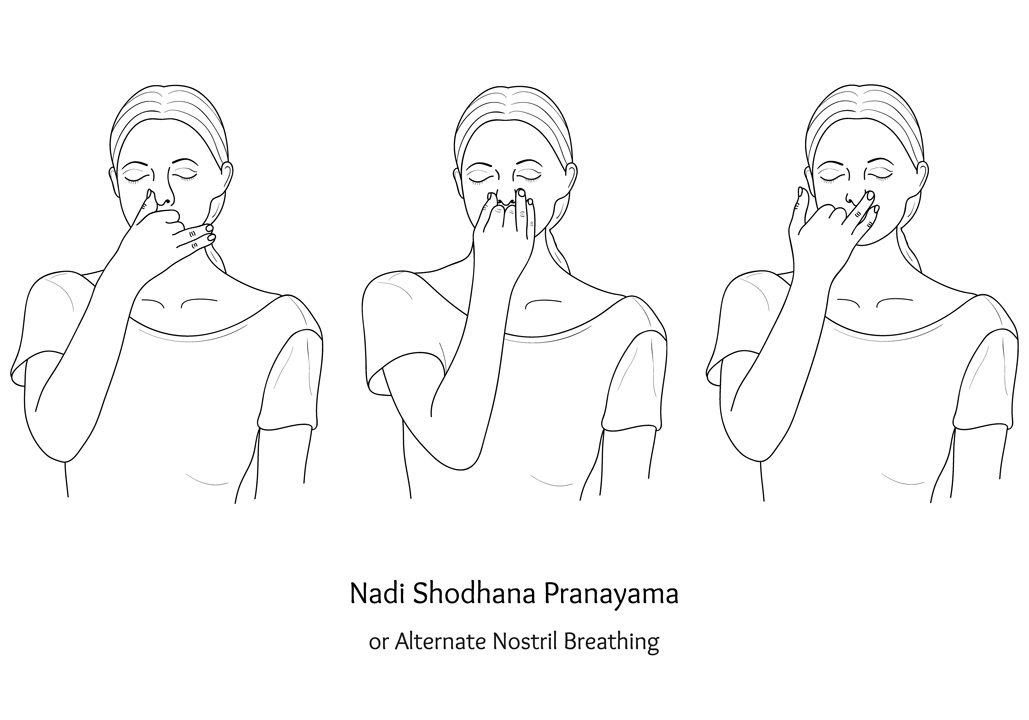
Pranayama: the breath of yoga
Starting a praṇayama practice: the breath of yoga. By Jac Godfrey
Pranayama is the fourth of the Eight Limbs of Yoga and is the ancient practice of using special yogic breathing methods to enhance and unlock energy flow within the body and mind.
The ancient yogis used these techniques to purify the body and mind to facilitate meditation and to reach uplifted states of consciousness.
Pranayama is also a tremendous tool in our modern lives, to enhance mental and physical wellbeing, as it confers a myriad of health benefits. The breathing techniques range from the very simplest, which can be used by anyone, to far more complex methods which require detailed training and practice.
The word pranayama itself is a Sanskrit word derived from two separate words:
Prana: means vital force, or life energy.
Yama: this actually has several meanings but, in this context, means to ‘restrain’ or, as I prefer to think of it, ‘to skillfully harness’.
So the purpose of pranayama is to skillfully harness your vital energy.
We can all benefit from increasing our energy at times, whilst at other times we feel a need to create a calmer frame of mind. Here’s where pranayama comes in, as a versatile way to change the feel of your energy.
There are several main types of classical pranayama, each of which have very different effects on our energy. Some of these breathing practices are deliberately calming, soothing and balancing, whilst other types are vigorous, invigorating and uplifting. You might call them lunar in nature (quietening and calming), or solar (energising and warming).
The safest and most accessible way to begin learning pranayama, especially some of the more complex techniques, is with a suitably qualified and experienced yoga teacher.
The Haṭha Yoga Pradipika, one of the leading texts on traditional Hatha Yoga states that although the proper practice of pranayama can bestow amazing benefits to health (the text actually says that it ‘weakens all diseases’), it highlights that incorrect practice can lead to more harm than good.
Starting a simple pranayama practice need not be daunting, however. As an introduction, follow this simple guide to alternate nostril breathing, or Nadi Shodhana.
NADI SHODHANA.
How to practice Nadi Shodhana pranayama - simple ‘alternate nostril’ breathing:
Benefits: clears, cleanses and balances the lunar and solar energy pathways (nadis); with regular practice reduces the incidence of ‘stress’ hormones cortisol and adrenaline; calms the mind and balances the nervous systems (the sympathetic and parasympathetic nervous systems, connected with left and right brain hemispheres respectively).
Category: balancing, calming and simple, it can be done from beginner level.
Contraindications: none, so long as you are not retaining (holding) your breath at any point. NB: breath retentions should never be done if you are pregnant.
- This is practiced seated with a tall spine to enhance breath flow and lung space. Choose an upright seated pose, which could be on the floor, perhaps using a cushion or yoga block for support, or even in a chair.
- Relax the shoulders and lift the chest. Take a few moments to centre.
- Using the right hand, form Vishnu Mudra (shown) – your index and middle fingers gently curled into the base of the thumb, leaving your ring finger and thumb free to touch at their tips.
- Rest the left hand on the left knee, tips of thumb and index finger touching, remaining fingers lightly extended, back of hand rests on knee. This is called Chin Mudra.
- Using the right hand, take thumb to right side of nose and lightly press the right nostril closed.
- Close your eyes. Exhale slowly out of the left nostril to prepare.
- Inhale gently through the left nostril to a slow count of 1, 2, 3.
- At the top of your inhalation, gently squeeze both nostrils closed with your thumb and ring finger.
- Then lift the thumb and exhale right nostril to a slow count of 3, 2, 1.
- Inhale right - 1, 2, 3.
- Lightly squeeze both nostrils closed.
- Lift finger and exhale left 3, 2, 1.
- Inhale left 1, 2, 3 - squeeze nose.
- Exhale right 3, 2, 1.
- Inhale right 1, 2, 3 squeeze nose
- Exhale left
And so on. At the top and bottom of each breath there is a natural pause. We are not deliberately holding the breath at any point at beginner level, although there are more advanced progressions of this pranayama where breath retentions, known as kumbhaka, are added in.
One ‘round’ of alternate nostril breath is when you have completed all steps from inhale left through to exhale left. We always end on a left side exhalation.
Initially try up five rounds to get a feel for it. As you progress, change it up by increasing the count to 1, 2, 3, 4 and 4, 3, 2, 1 or perhaps up to 5 or 6 when you have more experience.
If the breath feels forced at any point, stop, or reduce the count down again to a more comfortable level.
The breath should always be careful and gentle, rather than forcing breath through your nostrils.
It is vital that you do not overdo a pranayama practice – moderation and a regular practice is key to reaping the benefits. Start with several minutes’ practice at most and build up over time.
Nadi shodhana can be practiced any time. It is a good breath for either a morning or an evening practice, perhaps prior to meditation, as it has the soothing qualities of creating balance and calm.
Jac Godfrey is a senior yoga teacher, yoga teacher trainer and is the founder of Mokshala Yoga & Meditation Centre. She runs courses, including traditional pranayama online and in-studio, including pranayama.
Visit: mokshalayoga.co.uk







